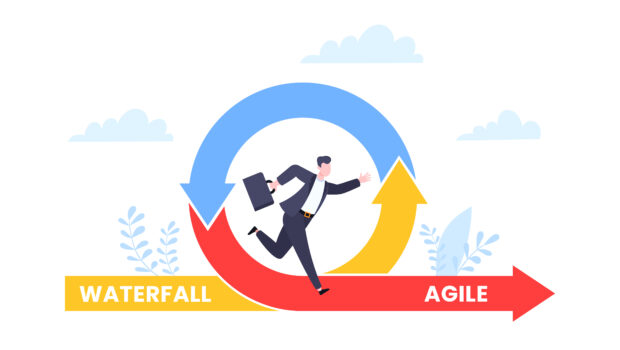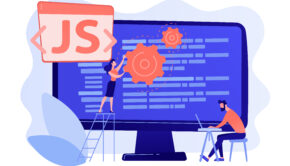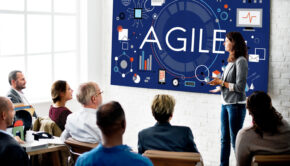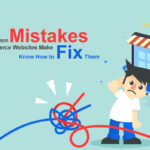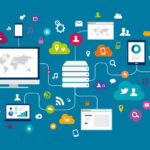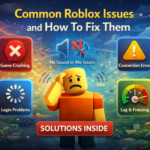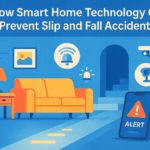Waterfall vs Agile: Which Methodology Suits Your Project Needs?
Any project’s success in the fast-changing field of software development depends on choosing the appropriate development methodologies. Two approaches rule the scene: Lean and Waterfall. Each offers unique benefits, uses, and guiding principles.
Hence, organizations must make a big decision when choosing between them. The argument becomes more heated as 2024 approaches, particularly in light of the growing tendency for businesses to employ remote software engineers to access international talent pools and satisfy a broad and changing market.
With its linear and sequential stages, the waterfall technique is more conventional. With this approach, each stage must be finished before the next one can start, and extensive documentation is stressed. This approach is often seen as more regulated and predictable, appropriate for projects with clear specifications and little modifications.
The guiding ideas, benefits, and uses of the Agile vs Waterfall methodologies will be examined in this paper. In particular, we will look at how these approaches fit with the needs and trends of 2024 in relation to remote work. Organizations may make wise choices that will improve their software development processes and results in the next year by knowing the advantages and limitations of each strategy.
Understanding the Waterfall Methodology
One of the first methodologies developed in software engineering is the waterfall technique. As with a cascade falling down a series of stairs, it is designed in a linear and sequential manner.
Phases of the technique include requirement analysis, system design, implementation, testing, deployment, and maintenance. It is a very regimented method, as each step needs to be finished before the next one starts.
Benefits of the Waterfall Methodology
1. Structure and Simplicity
Project management is approached with simplicity and discipline using the waterfall technique. Its manageable and understandable linear development via discrete stages guarantees clarity and organization.
2. Comprehensive Documentation
Documentation is given great weight in the waterfall process. Every stage generates thorough records that are used as a guide all the way through the project. Keeping project consistency is highly beneficial, especially when team members move.
3. Variability
Accurate budget and timetable forecasting is made possible by the sequential character of the waterfall technique. Project managers can better estimate and schedule resources, expenses, and deadlines when phases are well-defined.
4. Enhancement of Quality:
Inherent in the Waterfall methodology is quality control. Before going on to the next step, everyone is carefully reviewed and tested to ensure problems are fixed early and completely.
Drawbacks of waterfall methodology
1. Inflexibility
The main drawback of the Waterfall methodology is restricted flexibility because the framework is particular for numerous phases. This may lead to the following, if requirements change, there can be a huge, time-consuming, and costly affair in switching back to the previous phases.
2. Delayed Testing
As a result, it is typically carried out during the testing phase following the implementation of the project. As such, several enhanced bugs can be identified later in the development cycle.
Understanding Agile Methodology
The Agile methodology represents a big change from conventional development methodology. Focus on flexibility and ongoing development, both iterative and incremental. Usually spanning two to four weeks, agile divides the project into smaller, more manageable chunks known as sprints. Every sprint yields a possibly shippable product increment.
Agile Methodology Advantages
1. Modality and Adaptability
Changes are to be highly adapted to using the Agile technique. Agile is perfect for projects where scope and needs will likely vary since requirements and solutions develop via cooperation.
2. Continued Supply
Agile encourages regular increments of product delivery. This guarantees that the project keeps adding value, makes it possible to identify problems early on, and encourages ongoing input and development.
3. The Interest of the Client
Client involvement is active throughout the whole development process using the Agile approach. Regular input and iterative development guarantee that the finished product more closely satisfies customer expectations.
4. Collaborative Empowerment
Development teams are empowered by agile, which also encourages ownership and drive. When you employ remote software engineers, these factors—higher productivity and work satisfaction—often result.
Drawbacks of Agile Methodology
1. Less Predictability
This flexibility in wishing to break work into iterations makes forecasting the time and cost required to complete the project difficult. However, this could cause some challenges, especially when working on projects with timelines coupled with defined budgets.
2. Requires Experienced Teams
In Agile, cross-functional and self-organizing project teams are used. In particular, Agile can be problematic for new teams and teams that tend to produce more problems than solutions; this is because Agile teams are somewhat reserved, autonomous, and more flexible than traditional teams.
Waterfall vs Agile: Key Differences
Waterfall vs Agile choosing what way is best, there can be no definitive winner. It is significant to note that both methods have advantages and should be used based on the project and/or organization’s type.
Selecting the appropriate methodology requires an understanding of the fundamental distinctions between Agile and Waterfall:
1. Flexibility:
Agile allows for change, whereas Waterfall is inflexible and has a set scope.
2. Client Involvement:
Agile includes customers all throughout the project, while Waterfall only does so at the beginning and finish.
3. Documentation:
Agile places less emphasis on thorough documentation and more on functional software than Waterfall.
4. Testing:
Agile includes testing into the development process, while Waterfall does it after the build stage.
Waterfall or Agile: Which Development Methodology Should You Choose?
Project needs, team skills, customer expectations, and organizational structure are just a few considerations when choosing between Agile and Waterfall.
When to Use a Waterfall
1. Clear and Unchanging Requirements:
The methodical waterfall technique is advantageous if the project requirements are clearly specified and unlikely to change.
2. Timeline and Fixed Budget:
Since waterfall offers thorough planning and predictability, it is perfect for projects with these parameters.
3. Simple and Small Projects:
Waterfall’s direct approach may be more effective while Agile’s overhead may be superfluous for smaller, more focused projects.
When to Choose an Agile
1. Evolving requirements:
Projects with changing or poorly defined needs from the beginning gain from Agile’s flexibility.
2. Client Collaboration:
Agile is perfect when it takes ongoing client participation to develop the product to satisfy their demands properly.
3. Innovation and Speed:
Agile’s iterative methodology enables the quicker delivery of functional increments for projects that need for quick development and innovation.
4. Distributed & Remote Teams:
Agile emphasizes communication technologies and collaboration practices, which may improve productivity and cohesiveness in a world where companies employ remote software workers often.
Trends Influencing the Choice of Development Methodology in 2024
Here are some of the trends influencing the choice of development methodology in 2024
1. Increased Complexity of Projects:
Thus, when undertaking large and complex projects, Agile appears to be extremely useful because it also tackles change and combines it with the delivery of utility on an ongoing basis.
2. Emphasis on Speed and Innovation:
Waterfall is preferred in slow-changing environments. At the same time, the order is reversed in environments where innovating is faster, and it takes a shorter time to get to market with new products and services.
3. Remote Work and Distributed Teams:
Given that due to the COVID-19 outbreak, most organizations worldwide have had to switch to remote working, it must be mentioned that Agile is a method that can be applied more effectively in the context of distributed teams.
4. Customer-Centric Development:
Agile’s primary activities consist of iterative and cyclical processes, which must include the customer to receive feedback and stay engaged in development.
5. Technological Advancements:
More enhancing tools and solutions to support Agile ideas and processes, such as DevOps, CI/CD, and automation, are still developing, which in turn helps improve the way of Agile.
Conclusion
Waterfall methodology is still feasible for projects with well-defined specifications over the project scope and where documentation is critical and time-intensive. But, in the year 2024, we are seeing a shift in the direction of Agile, especially when it comes to projects that need flexibility, speed, and constant customer interaction.
While companies go on to hire remote software developers and integrate them into the stability of software development, the strength of Agile is in its ability to provide a structure with flexibility through iterations and expanded collaboration.
Therefore, several factors, including the project objectives, the community’s expectations, and the team’s competency, should inform the selection between Waterfall and Agile models. In this way, evaluating these factors will allow organizations to make the right choice and choose the methodology that will lead to success in 2024 and beyond.

